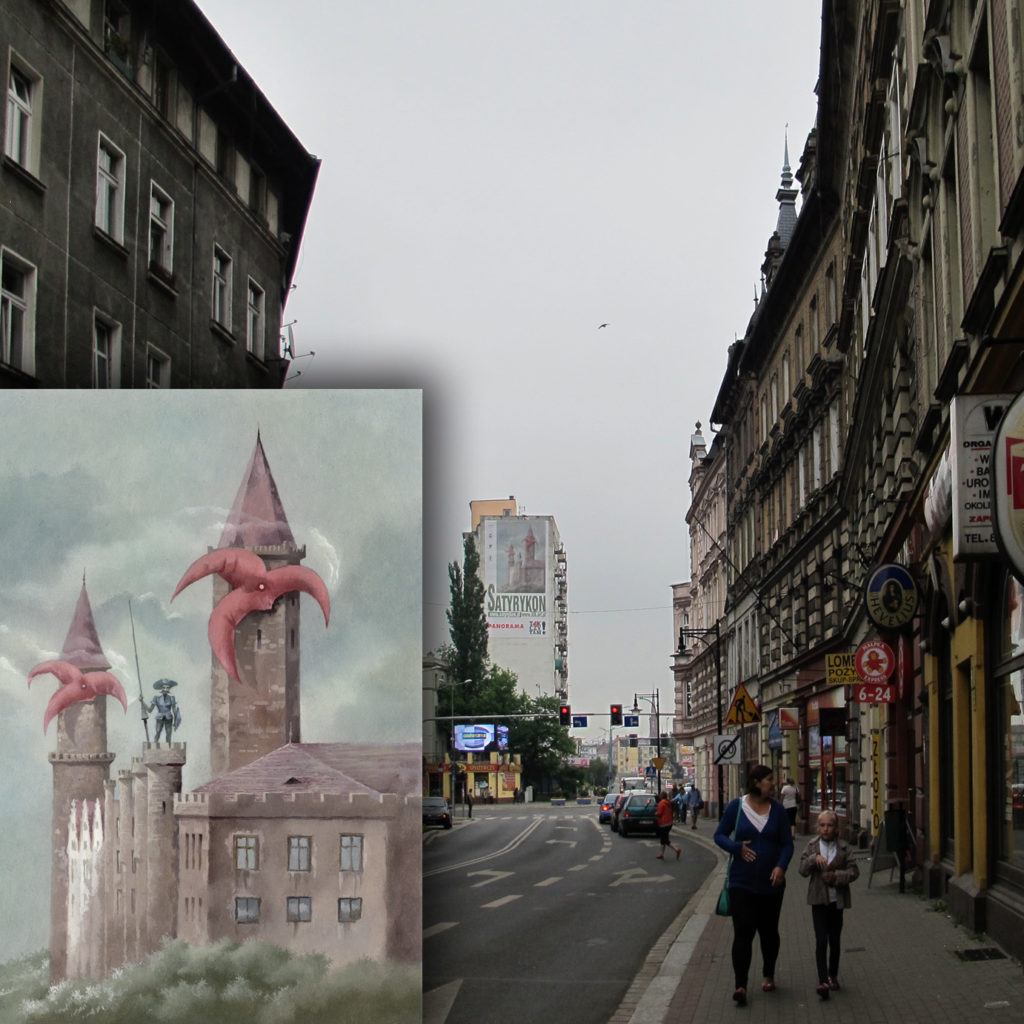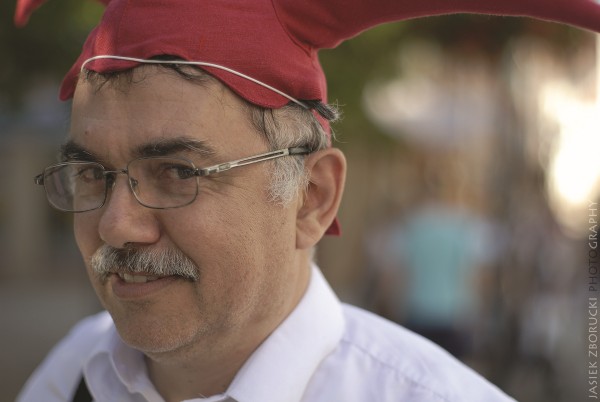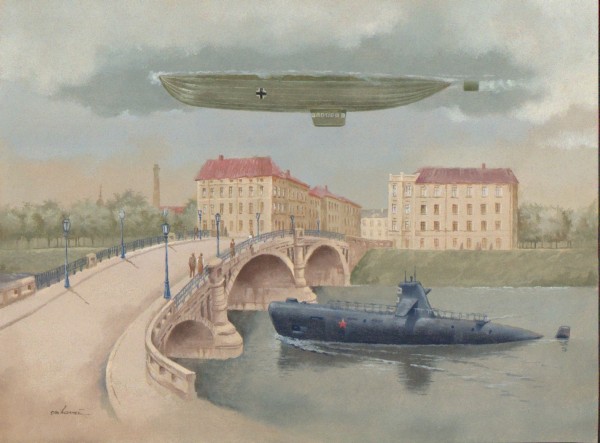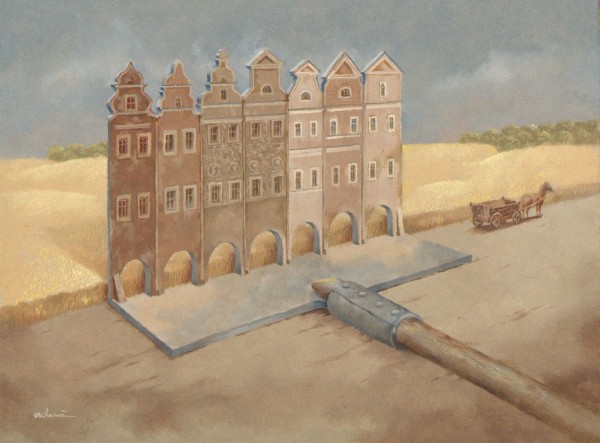interview with Florian Doru Crihana
Satyrykon: You are famous for the fact that you choose the topics of your cycles very carefully. These are not just ordered pieces, the topic has to be important and interesting to you. You are the author of the series of paintings dedicated to Don Kichote, Titanic, Eiffel Tower and other places in Europe. Was Legnica as interesting topic as for example Paris, Istanbul, Brugge or Venice? Did you find anything special in here?
Florian Doru Crihana: Legnica is an amazing universe, incredibly diverse, a little of everything. Other cities that I studied had some characteristics, but too significant. Bruges has channels and chocolate, Paris has the Eiffel Tower, Istanbul has Hagia Sofia, Venice has gondolas and Piazza San Marco. Legnica has everything. And history, history is the focus. It is not a surprise given it’s central position in Europe. Therefore painting Legnica, I painted Europe.
How do you prepare to work on specific subject/ topic? How long does it last, what do you do to prepare and what is the most important: watching, collecting historical sources or talking to people?
I have learned the science of study and research at the University of Galati. I knew precisely that at one point in my career, I will use the concepts learned. The moment came when I decided to leave caricature competitions. They were too small for my intellectual capacity. I cannot tell you everything from what I do to make an exhibition. The first thing is to get that city located in space, to be able to watch the city from the sky, and every building to display in the correct position with cardinal points. I draw my own maps of the city and drop thumbnails of buildings in the correct position. I memorize the architecture so I can juggle on paper. Well, and many others … therefore each series needs one year. „Legnica” lasted less because of the many visits I have made in the past.
Seemingly there are not many contemporary details in your paintings, these are rather images from the past. Is past more interesting and more beautiful to you than present days? In other words, is the world becoming worse with the time?
I chose a past period to remark the validity in time of my satire. My opinions about the world are historically valid. I do not paint for today but forever. And I wanted to prove that we always do the same mistakes; no lesson is not enough to change us forever. Yes, it is my way of saying that it is not always good to modernize. See? … My works seem melancholic, slightly ironic, but overall I do a satire, one historical.
On the other hand your paintings show conquests of science and technique and progression in very beautiful and romantic way? Isn’t it a contradiction?
All your questions hit the target in the center. My new attitude in art is an eruption at the ridiculous topics which competitions propose to the world of artists. That’s what I wanted: to show something else, something you have never thought of.
The interest in history and its mechanisms is visible in your cycles of works (sometimes monumental and involving many époques). Do you have your favorite historical époque ? Looking at the cycle about Legnica we can notice that “the golden age of humanity” is the end of XIX and beginning of XX century?
Yes, I think that was the best Era. The term “civilization” was more true then than now. At that time the cities looked much the same in Europe and it was useful for me. A bridge, a clock, a tram, a cathedral and not to forget! – Napoleon Bonaparte. He went through all the cities that I studied. What a man!
Your cycle contains many details, little details that are kind of “giving a wink” to people form Legnica or those who know Legnica and its history very well, and on the other hand there are symbols – universal , understandable to everyone in Europe. Can we say that your Legnica is a metaphor of Europe?
My series of paintings are a gift to the people of Legnica, but I owe it to the World. My exhibition is a criticism of human behavior through the beautiful story of Legnica city. More than other cities Legnica is a micro-Europe. I want you to watch the series as a whole satirical. Taken each work only seem ironic or nostalgic. If is not enough, look at the series Bruges, Venice, Bologna, Istanbul, Paris.
Once in an interview you said that your works consist of 20% of humor and 80% of satire. We can see warm humor at once, but satire is hidden deeper. What in Legnica and its history or in generally Poland moved/touched your critical senses, the sense of satirist?
Saying the story of the events that took place in Legnica city is itself a satire. Thank you for the opportunity to study your history deeper. I have treated with indulgence and have included the events of history in the exhibition structure because they should not be forgotten.
What is the most important in your paintings? This shown on the foreground or this hidden in the corner or this what is not shown but only suggested?
With a smile on my face I like to insinuate, but sometimes I have to say it straight. I look at those who cry about the classics of caricature, those in the British and American press and I smile. The same and the same boring names like there are no present values either than them. Well, the values do not live in London or New York – the artist asks there how The New York Times pays? How The New Yorker pays? They do not have time and silence to paint 40 pieces about Legnica, no cash in advance. They do not care about the history of Central Europe nor that an engineer draws the World in his 5th floor apartment, near the border with Ukraine.
FLORIAN DORU CRIHANA
LEGNICA – satirical impressions
RING Gallery in Legnica
9 June-31 July 2014
exhibition opening 13th June, 6.30 p.m.






